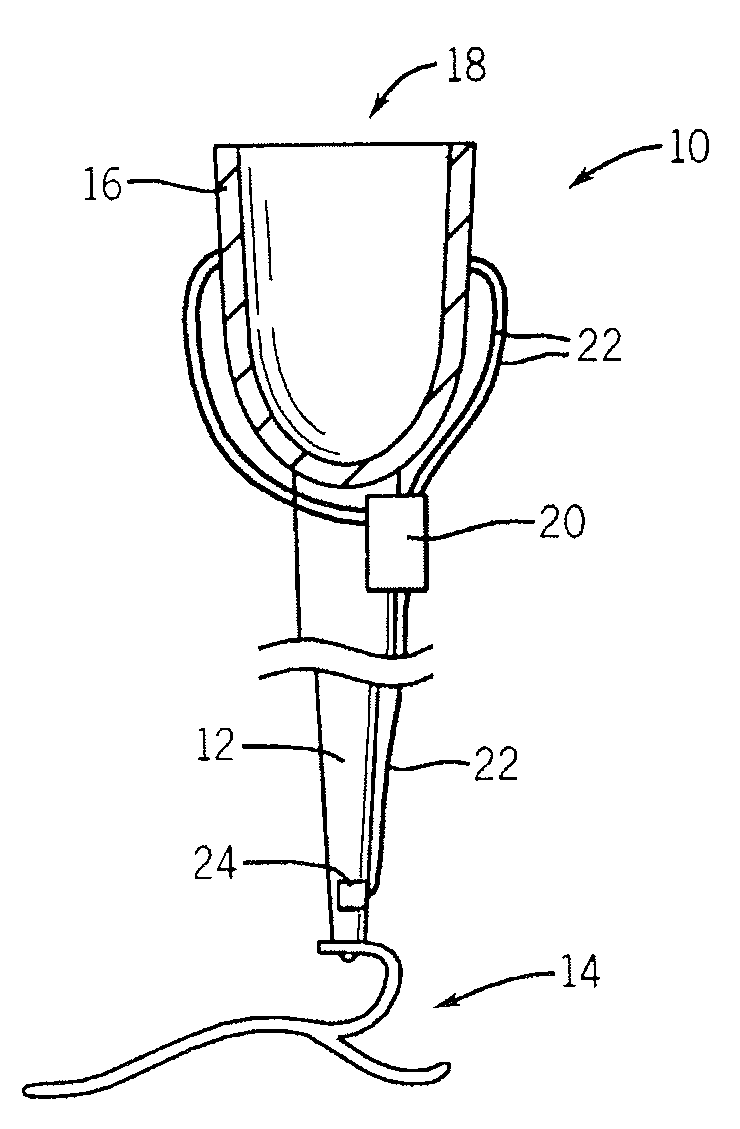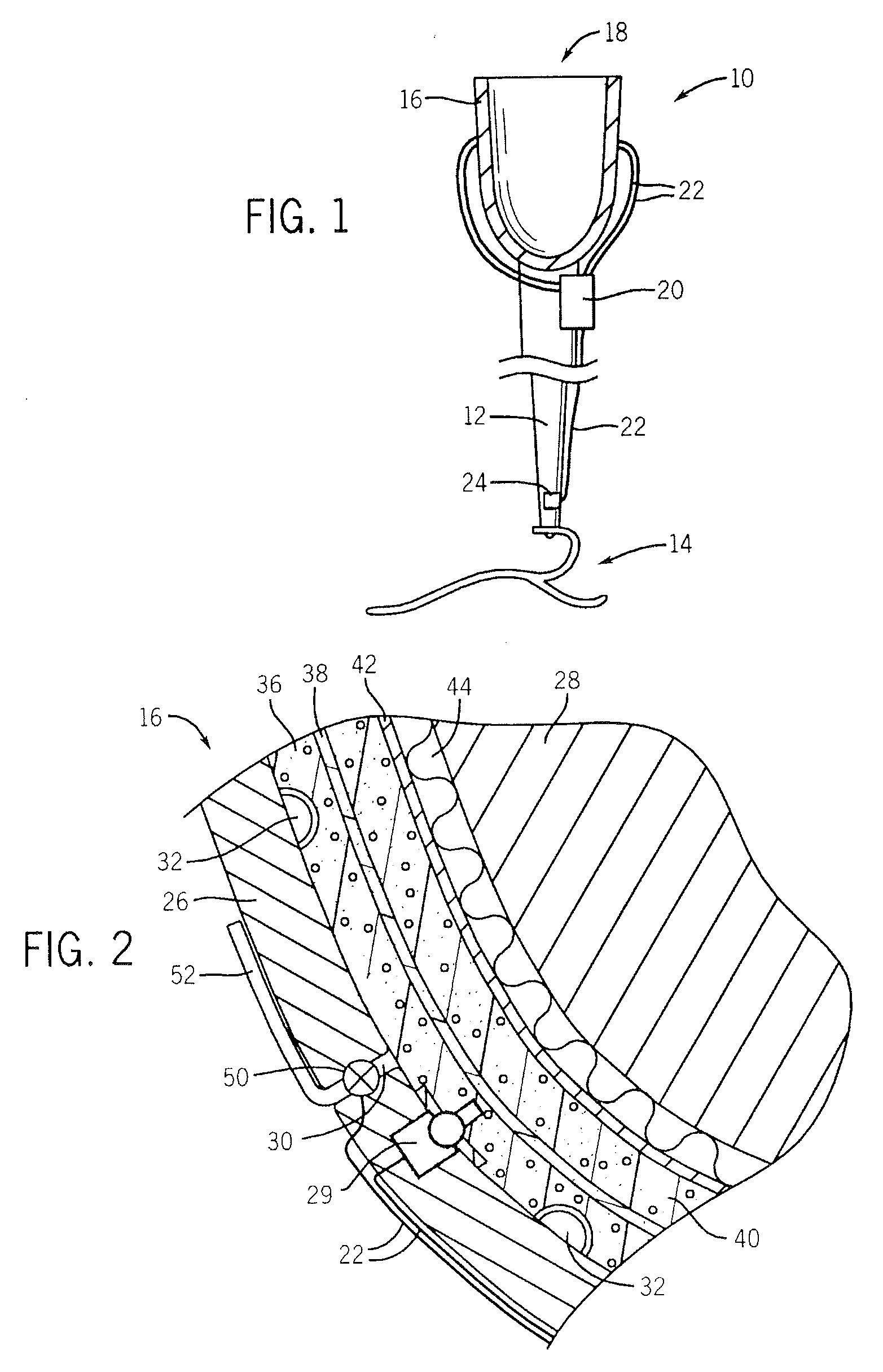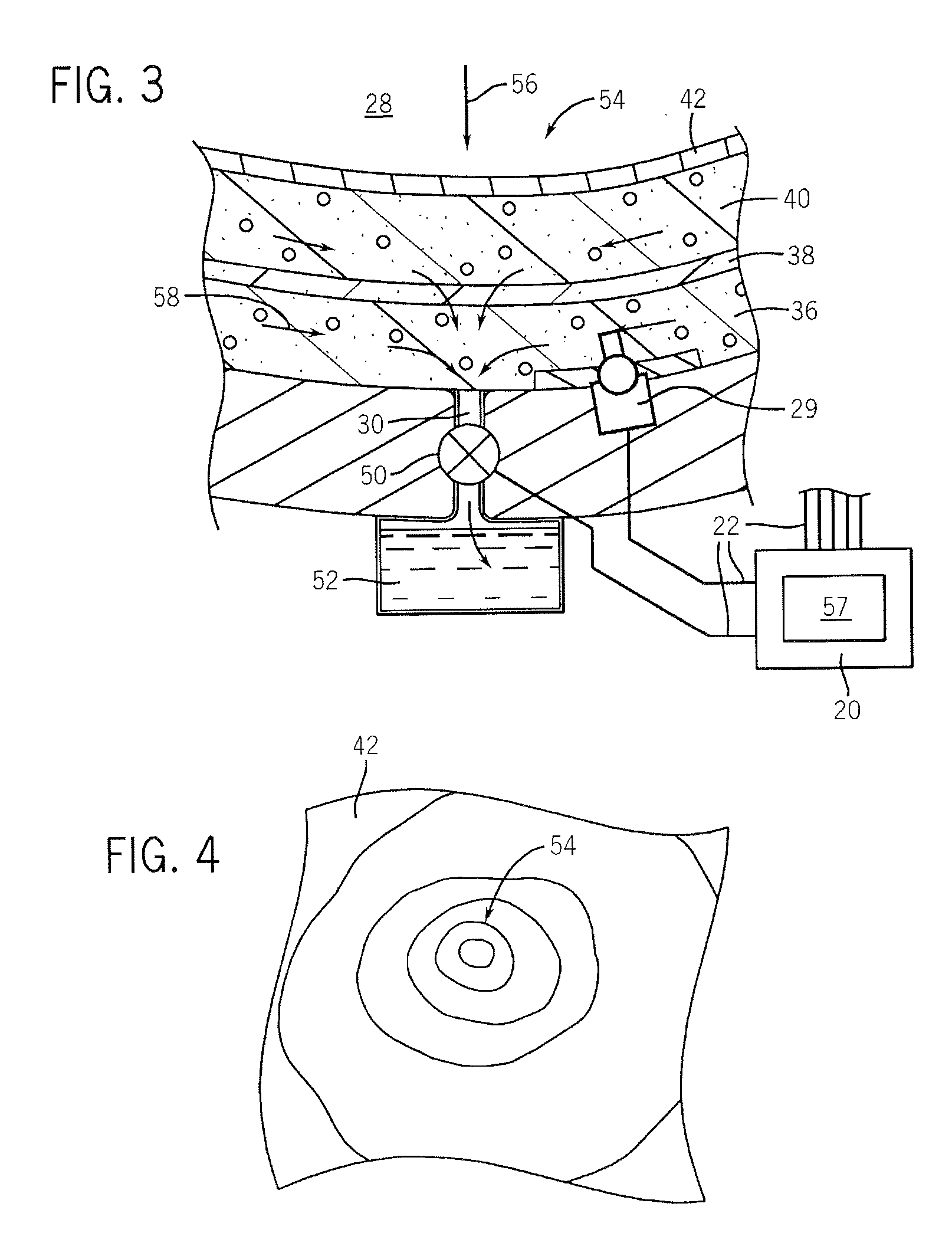Prosthetic socket with real-time dynamic control of pressure points
a pressure point and prosthesis technology, applied in prosthesis, medical science, artificial legs, etc., can solve the problems of high pressure the volume of the residual limb changes significantly, and the persistence of localized pressure points in the contact between the residual limb and the socket, so as to facilitate multiple pressure control points and reduce high pressure points
- Summary
- Abstract
- Description
- Claims
- Application Information
AI Technical Summary
Benefits of technology
Problems solved by technology
Method used
Image
Examples
Embodiment Construction
[0029]Referring now to FIG. 1, a prosthetic leg 10 may include a leg shaft 12 terminating at its lower end with a foot portion 14 and at its upper end by a socket 16. The socket 16 defines a volume 18 opening upwardly to receive the residual limb 28 of a patient (not shown in FIG. 1). A battery powered micro computer 20 may be attached to the prosthetic leg 10 to receive signals over signal lines 22 from valves and sensors in the socket 16 (to be described below) and a stride sensor 24, such as a spring-loaded switch, accelerometer, or strain gauge, sensing force or acceleration on the leg shaft 12 indicating a stride portion of the patient's gait.
[0030]Referring now also to FIG. 2, the socket 16 may include an outer rigid shell 26 conforming generally to the outer surface the residual limb 28. The shell 26 may be attached directly to the shaft 12 to communicate forces there between.
[0031]At various locations on the inner surface of the shell 26, pressure sensors 29 are placed, near...
PUM
 Login to View More
Login to View More Abstract
Description
Claims
Application Information
 Login to View More
Login to View More - R&D
- Intellectual Property
- Life Sciences
- Materials
- Tech Scout
- Unparalleled Data Quality
- Higher Quality Content
- 60% Fewer Hallucinations
Browse by: Latest US Patents, China's latest patents, Technical Efficacy Thesaurus, Application Domain, Technology Topic, Popular Technical Reports.
© 2025 PatSnap. All rights reserved.Legal|Privacy policy|Modern Slavery Act Transparency Statement|Sitemap|About US| Contact US: help@patsnap.com



